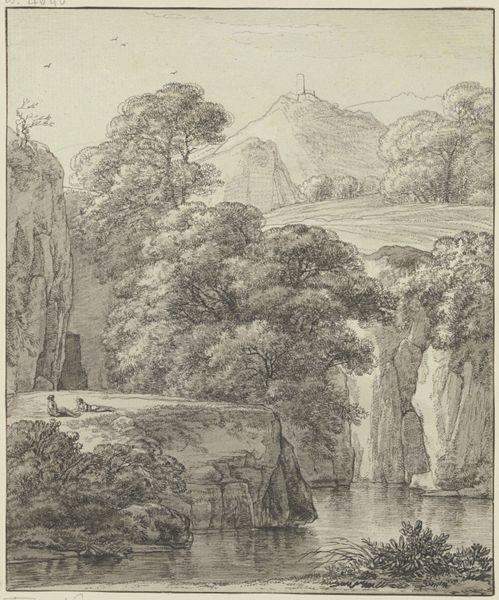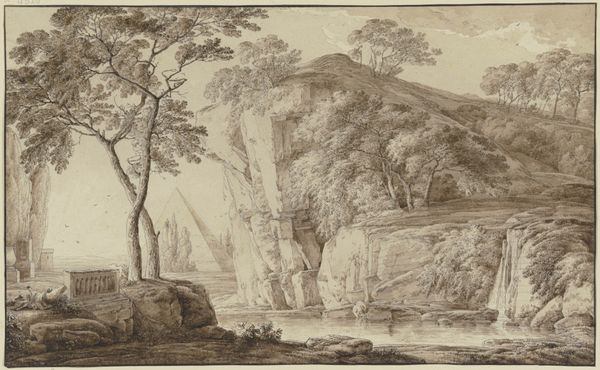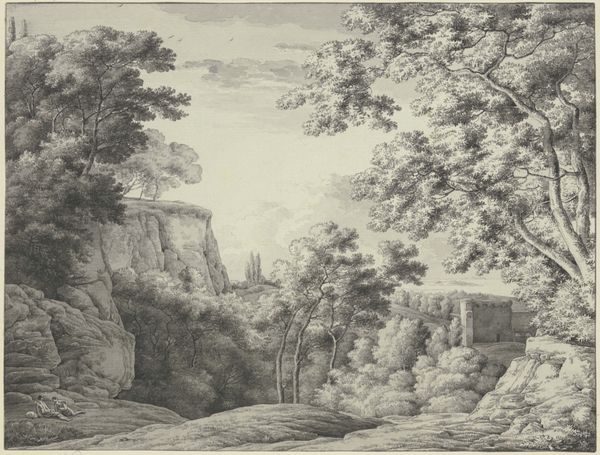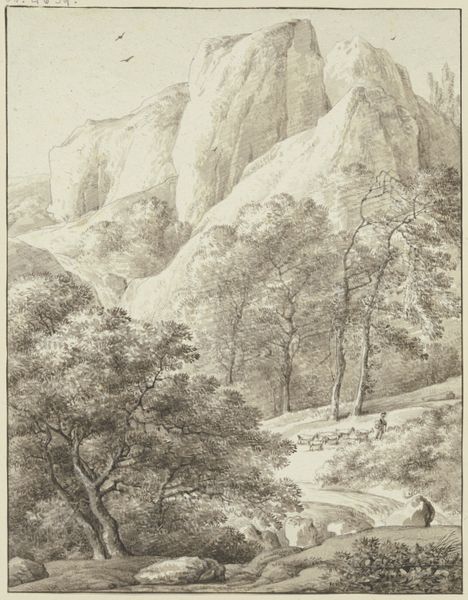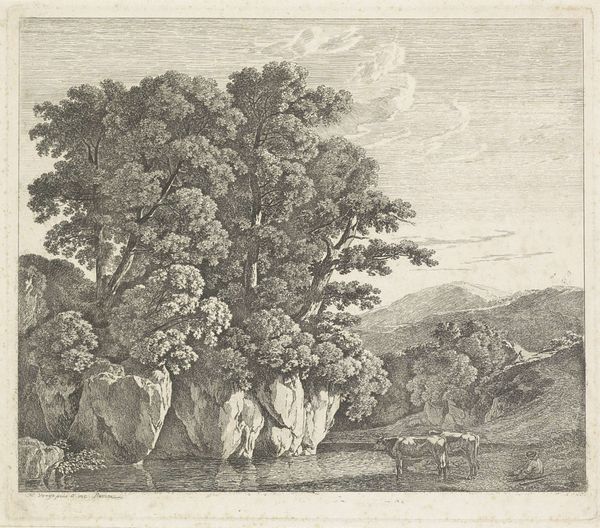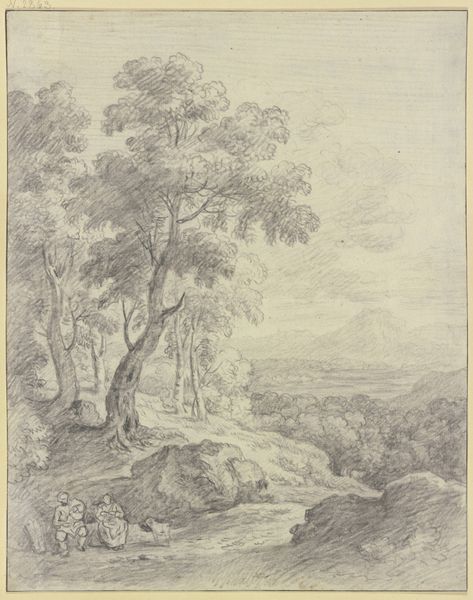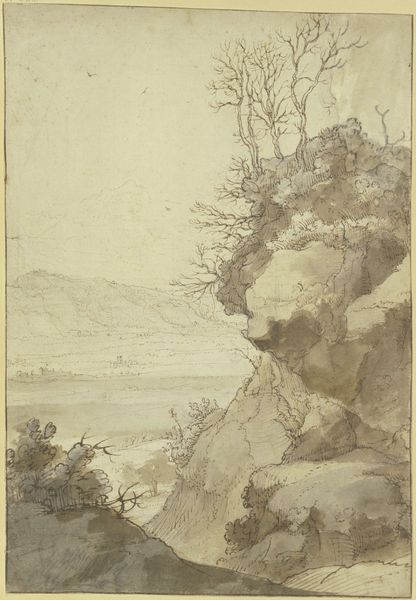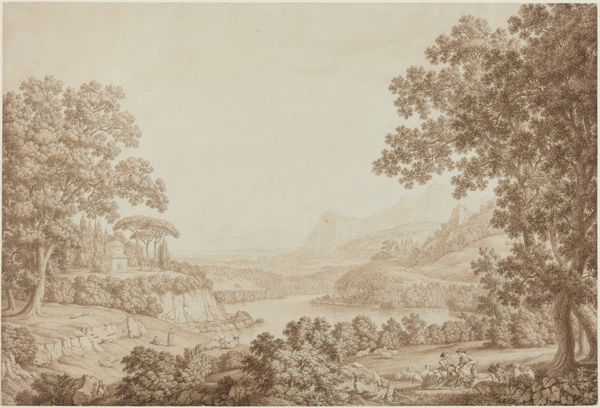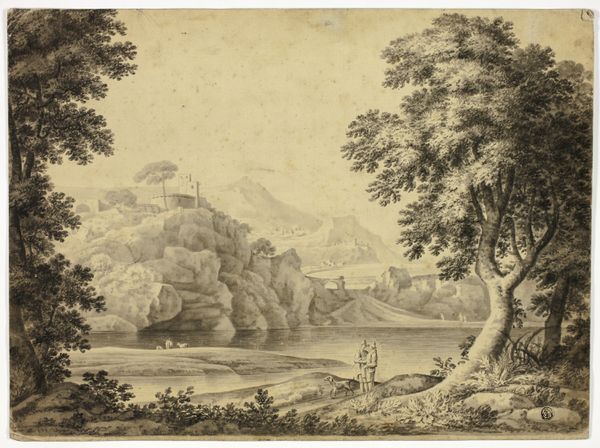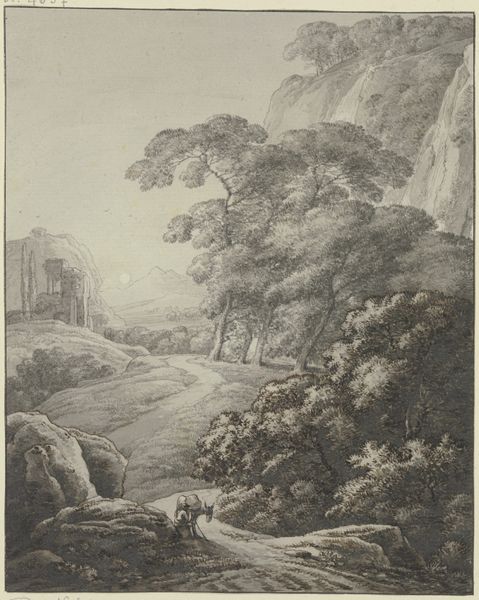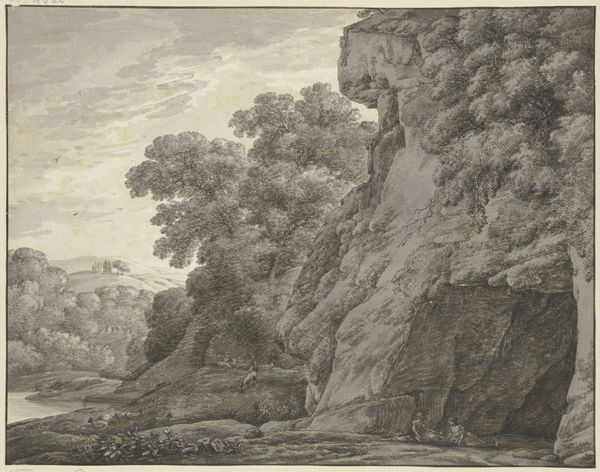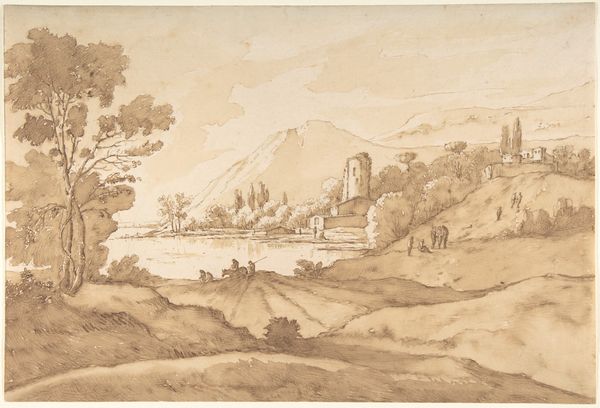
drawing, ink, graphite
#
drawing
#
landscape
#
etching
#
ink
#
pencil drawing
#
15_18th-century
#
graphite
Copyright: Public Domain
Franz Kobell made this landscape drawing, with ink and grey wash, sometime around the late eighteenth century. Kobell’s Germany, like other places in Europe at this time, was gripped by the aesthetic of the sublime. The sublime describes a feeling of awe mixed with terror when confronted by nature. Consider the jagged rocks, the thick forest, the lone figures fishing in the lower-right corner. The fishermen are dwarfed by the scenery, which reminds us that nature is both beautiful and powerful, and that human beings are at its mercy. But Kobell’s drawing is also a product of its time. The late 1700s were a period of growing interest in the natural sciences and the Enlightenment. This landscape may reflect the scientific study of nature. Historians of science and art can work together to interpret art such as this. Ultimately, the meaning of art is always tied to its social and institutional context.
Comments
No comments
Be the first to comment and join the conversation on the ultimate creative platform.
